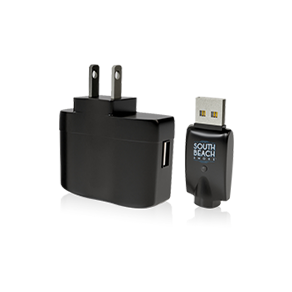- A
- B
- C
- D
- E
- F
- G
-
H
Holiday Vape Gift Guide How Do E-Cigarettes Work? How Long Do Vape Batteries Last? How Long Does Nicotine Stay In Your System? How to Deal with Smoking Relapse How to Manage Cravings and Withdrawal Symptoms When Switching to E-Cigarettes How to Pick the Right E-Cigarette Starter Kit for You How to Properly Use & Maintain Your E-Cigarette Device How To Troubleshoot Your Vape Pen Cartridge
- I
- J
- K
- L
- M
- N
- O
- P
- Q
- R
-
S
Shipping E-Cigs to Your City South Beach Smoke Mother's Day Vape Gift Guide South Beach Smoke Valentine's Day Vape Guide 2023 South Beach Smoke vs Logic E-Cigs South Beach Smoke's E-Cig Nicotine Delivery Program Spring Break Travelers E Cig Guide Summer Vape Guide 2022 Switch to Vaping to Beat the Cold
-
T
The Best Vape Pen Juice Flavors The Best Vape Temperature The Environmental Impact of Switching from Cigarettes to Vapes The Rise of Vaping Culture The Science Behind Vaping The Top Vape Influencers The Ultimate Guide to Transitioning from Smoking to Vaping: Common Mistakes and How to Avoid Them Throwing a 4th of July Vape Party Guide Tips for Vaping in the Heat Top 5 Must-Have E Cig Accessories Top 5 Vaping Blogs to Follow Top 5 Vaping Blogs to Follow Top Celebrities Who Vape 2022 Troubleshooting Common E-Cig Problems Troubleshooting Common E-Cigarette Problems
- U
-
V
Vape & Vape Juice Delivery to Your City Vape Battery Maintenance Vape Birthday Gift Guide Vape Pen Not Charging FAQ Vape Pod Vs Cartridge Which Is Better? Vape vs E Cig Comparison - Are E-Cigs and Vape Pens the Same? Vaping Abroad Vaping Etiquette - How to Vape In Public Vaping Facts vs Vaping Myths
- W
- X
- Y
- Z
- #
Understanding the Differences Between E-Cigarettes and Traditional Cigarettes
In the past decade, a new player has emerged on the smoking scene: e-cigarettes. With their modern tech and a host of advantages, they've quickly gained popularity among those looking to transition from traditional smoking. This article aims to shed light on the main differences between e-cigarettes and traditional cigarettes, and why the switch might be a game-changer for you.
What are E-Cigarettes and Traditional Cigarettes?
Traditional cigarettes are rolled paper containing tobacco, which is lit and inhaled. They've been a mainstay in society for decades, despite being linked to numerous health issues.
On the other hand, e-cigarettes are battery-operated devices that heat a liquid (usually containing nicotine), turning it into a vapor that is inhaled. This process is known as vaping. A particular kind of e-cigarette that stands out mimics the look and feel of a traditional cigarette, offering a familiar experience to users.
Comparing "e-cigs vs cigarettes", e-cigs don't burn tobacco and, hence, don't produce tar or carbon monoxide, two of the most harmful elements in traditional cigarette smoke.
Advantages of E-Cigarettes Over Traditional Cigarettes
E-cigarettes hold several advantages over traditional cigarettes. Health-wise, they contain fewer harmful substances. While not risk-free, many health experts believe that e-cigarettes are significantly less harmful than their traditional counterparts.
In terms of cost, the initial expense of an e-cigarette can be higher, but the long-term cost savings are substantial as the expenses are mainly limited to refills.
Lastly, e-cigarettes offer several social and environmental advantages. They don't produce ash, and the vapor exhaled dissipates more quickly and is less smelly than cigarette smoke, making them more socially acceptable.
E-Cigarettes vs Vapes: A Distinction
A crucial aspect of smoking, whether it's a traditional cigarette or an e-cigarette, is the experience it provides. It's not just about the intake of nicotine; it's also about the taste, the feel, and the rituals involved.
Smoking traditional cigarettes involve a distinct flavor, an unmistakable scent, and the tactile sensation of flicking the ashes. However, it also leaves a lingering smell on your clothes and breath, and the continuous purchase of packs can be a nuisance.
On the other hand, e-cigarettes, especially those resembling traditional cigarettes, offer a unique yet familiar experience. They simulate the physical sensation of smoking, complete with the hand-to-mouth action and the visual cue of "exhaling smoke" (which is actually vapor).
In terms of flavor, e-cigarettes provide an assortment of choices. The taste ranges from the traditional tobacco flavor to a variety of other options like mint, fruit, or even coffee, offering a personalized smoking experience. And a significant advantage is the absence of the lingering smoke smell.
When it comes to the question, "are e-cigs better than cigarettes," the answer can depend on context. It depends on several key factors such as health, the environment, and social acceptability.
From a health perspective, while no smoking alternative is entirely risk-free, e-cigarettes are considered less harmful than traditional cigarettes. They don't combust tobacco, which means the production of tar and carbon monoxide, two harmful constituents of traditional cigarette smoke, is eliminated. Many users have reported better overall health and reduced smoking-related symptoms after switching to e-cigarettes.
In terms of environmental and social impact, e-cigarettes again take the lead. They generate less waste and don't produce secondhand smoke. This makes e-cigarettes more socially acceptable in many settings where traditional smoking may not be, due to concerns about the smell and secondhand smoke exposure.
While individual experiences can vary, the switch to e-cigarettes often brings about positive changes. Smokers have found e-cigarettes to be a modern, cleaner, and more socially considerate alternative to traditional cigarettes.
Conclusion
To sum it up, the key differences between e-cigarettes and traditional cigarettes revolve around their composition, health impact, cost-effectiveness, and social acceptability. If you're considering a switch, the e-cigarette that looks like a real cigarette might be the perfect start. Transitioning from traditional cigarettes to e-cigarettes could be a step forward to a healthier, more socially friendly smoking experience.


